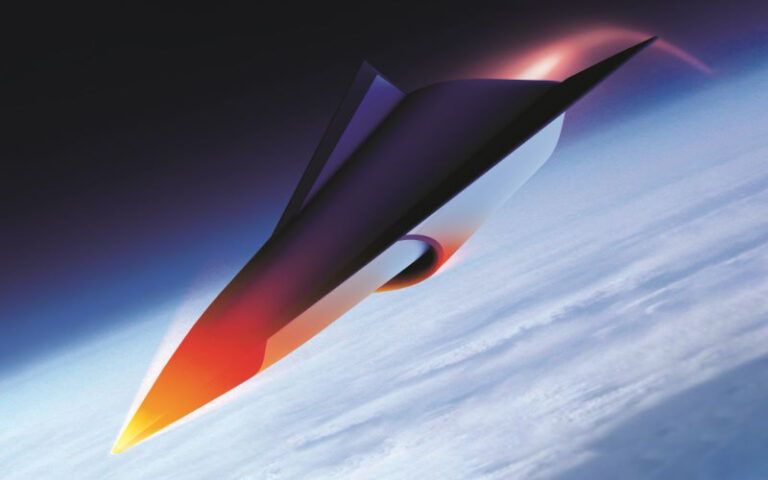Engineers from GE Aerospace have successfully run a remote detonating combustion engine in a ramjet setup during a rig test, an engine design the company believes could be used to power hypersonic aircraft and missiles more effectively.
According to GE Aerospace, researchers at its Global Research Center in Niskayuna, New York have built the world’s hypersonic dual-mode ramjet (DMRJ) and run it in a supersonic flow stream.
The new type of engine could be used to power hypersonic vehicles, enabling longer ranges and speeds in excess of Mach 5 (4,000mph) with increased efficiency.
The DMRJ with remote detonating combustion (RDC) demonstration took 12 months to produce and the team expects to demonstrate a full DMRJ with RDC at scale next year.
A typical air-breathing DMRJ propulsion system can only begin operating when the vehicle achieves supersonic speeds of greater than Mach 3. GE Aerospace engineers are working on a rotating detonation-enabled dual-mode ramjet that can work at lower Mach numbers, enabling the air vehicle to operate more efficiently and achieve longer range.
GE Aerospace bought hypersonic propulsion company Innoveering last year, and has combined its dual-mode ramjet engine capabilities with its own work in RDC, experience in high Mach R&D and engine development.
RDC enables higher thrust generation more efficiently, at an overall smaller engine size and weight, by combusting the fuel through detonation waves instead of a standard combustion system that powers traditional jet engines today.
A rotating detonation engine (RDE) is similar to pulse detonation engine (PDE), but while PDE requires the chambers to be purged after each pulsed detonation, in an RDE the waves cycle around the combustion chamber and the process is self-sustaining. Modern R&D into both types of engine is ongoing for spaceflight and hypersonic air vehicles, notably with Russia’s Rostec group claiming a breakthrough in PDE technology in 2021, and progress reported by researchers into RDE at the University of Washington in 2020.
Mark Rettig, vice president and general manager, Edison Works Business and Technology Development, GE Aerospace said, “The successful development, integration, and demonstration of GE’s technologies and capabilities will position us to provide differentiating hypersonic propulsion systems for our customers now and well into the future.
“We have assembled the right expertise, with the right capabilities, and invested strategically to ensure we are aligned very closely with the needs of our customers. The significant results we have had to date give us confidence that we are moving in the right direction.”
The successful high-speed propulsion DMRJ demonstration is part of GE’s hypersonics program, which is also developing high-temperature materials and high-temperature electronics. The company has been involved in hypersonics development in areas such as high-temperature ceramic matrix composites, silicon carbide power electronics, additive technologies, and advanced thermal management for more than a decade.
Amy Gowder, president and CEO, GE Aerospace, Defense and Systems said, “The highly successful demonstration of a DMRJ with RDC is an outgrowth of our more than 10 years of RDC work, including the strategic acquisition of Innoveering that has brought leading technologies and experience in hypersonic propulsion and ramjets.”
As part of an ongoing break-up of the GE conglomerate, GE Aerospace will spin off as a standalone company between March and July next year.





